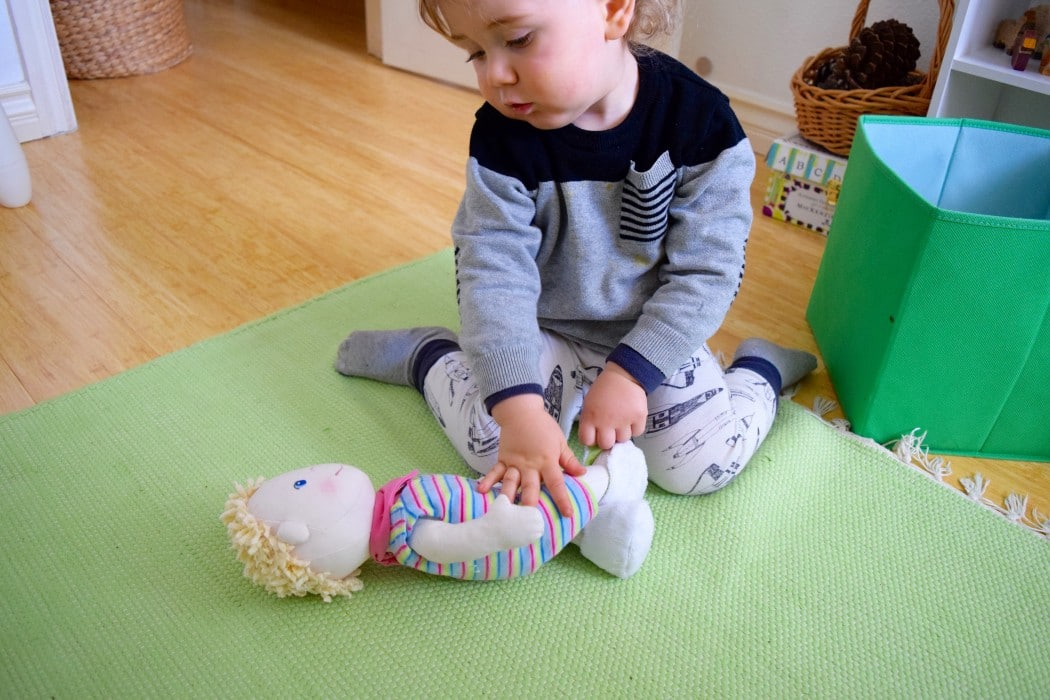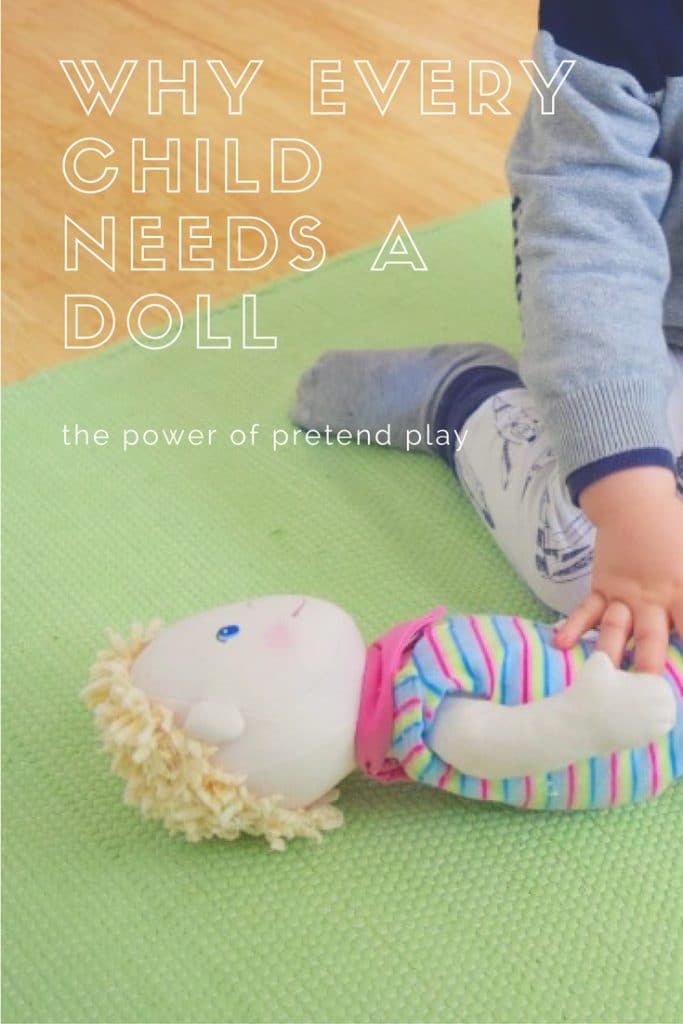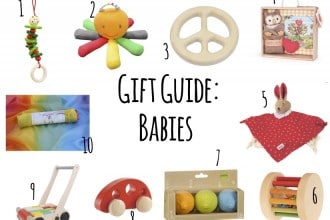There are plenty of toys that children have that they don’t really need. Toys that are simply for entertainment, fun, or just because. Then there are toys that every child should have. Toys that inspire the imagination, develop the body, and grow the mind. Toys like the doll.
When we got Dominik a doll for his first birthday, most people didn’t blink an eye. But there were a few who wondered why we gave our child, a boy, a baby doll. It’s not entirely surprising that some people just associate dolls with girls, after all, the packaging and advertising are pretty blatantly feminine. And of course, there are still a few people who hang on to traditional gender roles. Such as the idea that women care for children and should therefore have a doll to practice on or that boys should only play with masculine toys like trucks and tools. Having a doll will have no effect on certain traits and outcomes, but it will help a child of any gender to grow, develop, and understand the world.
Dolls help to develop cognitive brain functions:
Starting around age 2, children begin to practice pretend play. This is the act of creating situations, stories, and creations with themselves and with their toys, in other words “dramatic play”. With a doll, this can be pretending to care for a baby by feeding, dressing, rocking, and holding them.
Dolls help to develop fine motor skills:
When playing with a doll, each act can help with the development of a child’s fine motor skills, or their smaller and more precise movements. Dressing and undressing dolls means that kids are practicing using button, putting on pants and socks, using a zipper, and eventually tying laces and ribbons. If they are pretending to feed a doll, they are improving their hand-eye coordination as they bring a spoon or bottle to the dolls mouth. Each of these fine motor skills are vital to developing their own self-care and everyday habits.
Dolls help with language skills.
Dolls are fantastic for teaching words and phrases to children because they are not just visual, but the child is able to interact with the doll. Using a doll to name body parts or clothing items is a great way to widen vocabulary. And a doll can be used to teach common phrases as they relate to actions like “the baby is going to sleep” or “I am feeding the baby” or “the baby is under the blanket”. This can be extended on to teach feelings such as hunger and fatigue or emotions like sadness and happiness.
Dolls help with social skills.
When a child interacts with a doll, they are practicing how to interact with someone else. The skills that they are picking up on from the world around them are being put to use through pretend doll play. A tea party is a great example of this. A child having a tea party with a doll practices sharing food, being polite, and having a conversation. Each interaction with the doll helps children to understand a different role and to make sense of what they see around them. It really is like “walking in someone else’s shoes”. Through pretend play, they learn all about different roles like caregiver, mother, father, child, hostess, older person, younger person, and even a whole range of careers. Taking a look at roles from different perspectives is the best way for children to learn about people and how to interact with them. This is a huge step in the development of empathy, sympathy, and caring.
Dolls help to develop emotional skills.
Often, when a child acts something out with a doll, it is to make sense of an emotion or emotional situation that the child was involved in. Children need help in naming and understanding emotions, especially because they can feel very big, powerful, and scary. Reimagining the scenario with a doll puts the child in power and in a better position to make sense of their feelings. Plus, having a doll can be a great comfort for children because it’s a friend that is always there.
Dolls help to teach life skills.
A doll can be such a great tool in teaching skills like using a toilet, washing hands, and getting dressed. With a doll, a child is in control, so it takes out the “power struggle” that often creates a block between parent and child when teaching life skills. Putting a child in a role to practice teaching a doll about how to use the potty, reinforces how they themselves should do it.
And that is why children of all genders should have a doll. It doesn’t have to be a fancy, expensive, or even realistic doll. In fact, the plainer the doll, the more imaginative the play will be. We got the most gender neutral doll we could find for Dominik in order to expand his play choices. It’s amazing what even the simplest doll can inspire for young children.
You can find Dominik’s doll here:
Here are some more great dolls for all ages:






